Although Min-Kush is only about 100 miles from Bishkek, as the crow flies, the mountains make us travel 250 miles. We reached a scenic viewpoint along the road, and I stopped to take a picture. I exited the truck and approached a horse with dramatic snow-capped mountains peeking through the clouds. A man came and invited us to ride his horse around his farm. This is his farm, his 75 sheep, and his horse. The horse and I galloped around the farm, chatted with the farmer, and got back on the road. This was my first time on horseback after a year and a half in Central Asia.
Min-Kush, once a prosperous town nestled in the Kyrgyz mountains known for its bustling uranium mining industry, has hit the end of the road literally and figuratively. Coming down the A367 highway, a nondescript road sign says “Min-Kush” with an arrow pointing left. We turned, and the road seamlessly transformed from pavement to dirt. It is the last and only settlement on this road off of the highway. The only other vehicles we pass are semi-trucks carrying tons of coal destined for Kyrgyzstan and China.
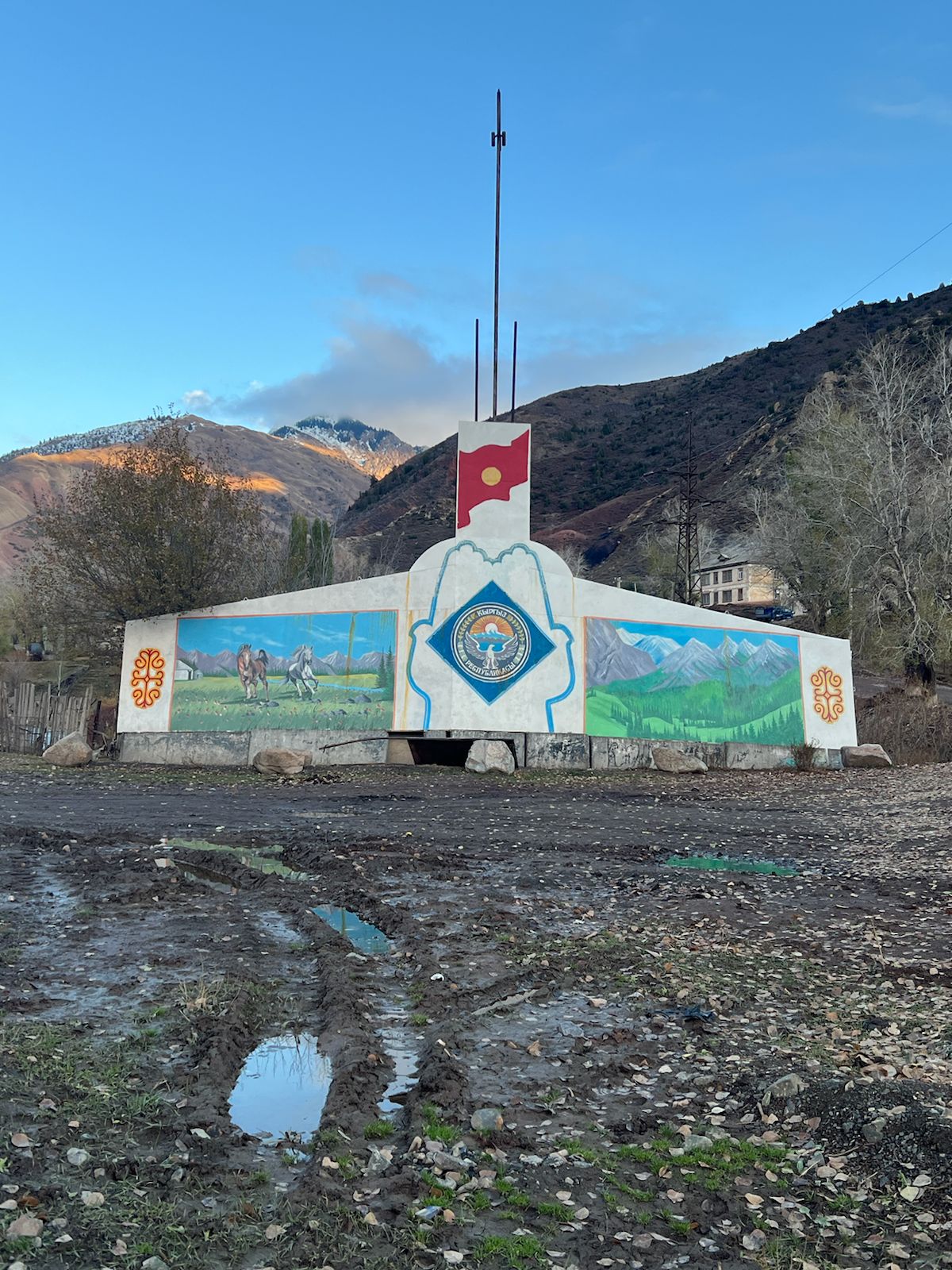
@TCA H.Kuvin
The city peaked at around 20,000 in the 1980s, but today’s number hovers around 3,500. Established in 1955, the apartments and houses are built in the Stalinist architectural style. The vibrant blue paint that once covered the wooden panels is faded, and sections of the buildings are caved in, but people still live here. The contrast in one building is stark. On the top floor, there are broken windows and unhinged shutters. On the bottom floor, there are new window frames and flowers on the windowsill. The blossoming life on the windowsill is far from what it once was.
We stopped and chatted with some locals and asked about their lives. “When Moscow supported us, we had everything: stores, schools, factories, and a hospital. Now…nothing, but we cannot dwell on things. Life is better now than it was after the fall of the USSR.” The man asks for a cigarette and a light; my French friend complies with his request.
The main draw of Min-Kush for me is an abandoned felt pen factory. I’ve seen pictures online of some incredible Soviet banners that serve as a time capsule in the mountains. We asked if anyone knew where to find it, and a man told us it was torn down and replaced by a soccer field.
As night set in, we looked for a guesthouse of sorts. I had read online that there is one, but there are no signs or information about it anywhere. We stop by a man fixing his Soviet Chaika car on the side of the road. He tells us the hotel is right up the road. We drive to an unlit building where two men are fixing another truck. We chatted, and he made a phone call. Ten minutes later, a lady shows up, unlocks the door, and shows us two rooms with three single beds. Perfect. The toilet does not work, and the water is not clean, but it was either here or an hour away in Chaek. We each handed the lady $11 for the night; she showed us the kitchen and told us there was a store where we could buy food to cook. We buy two packets of pelmeni for dinner and eight eggs for breakfast.
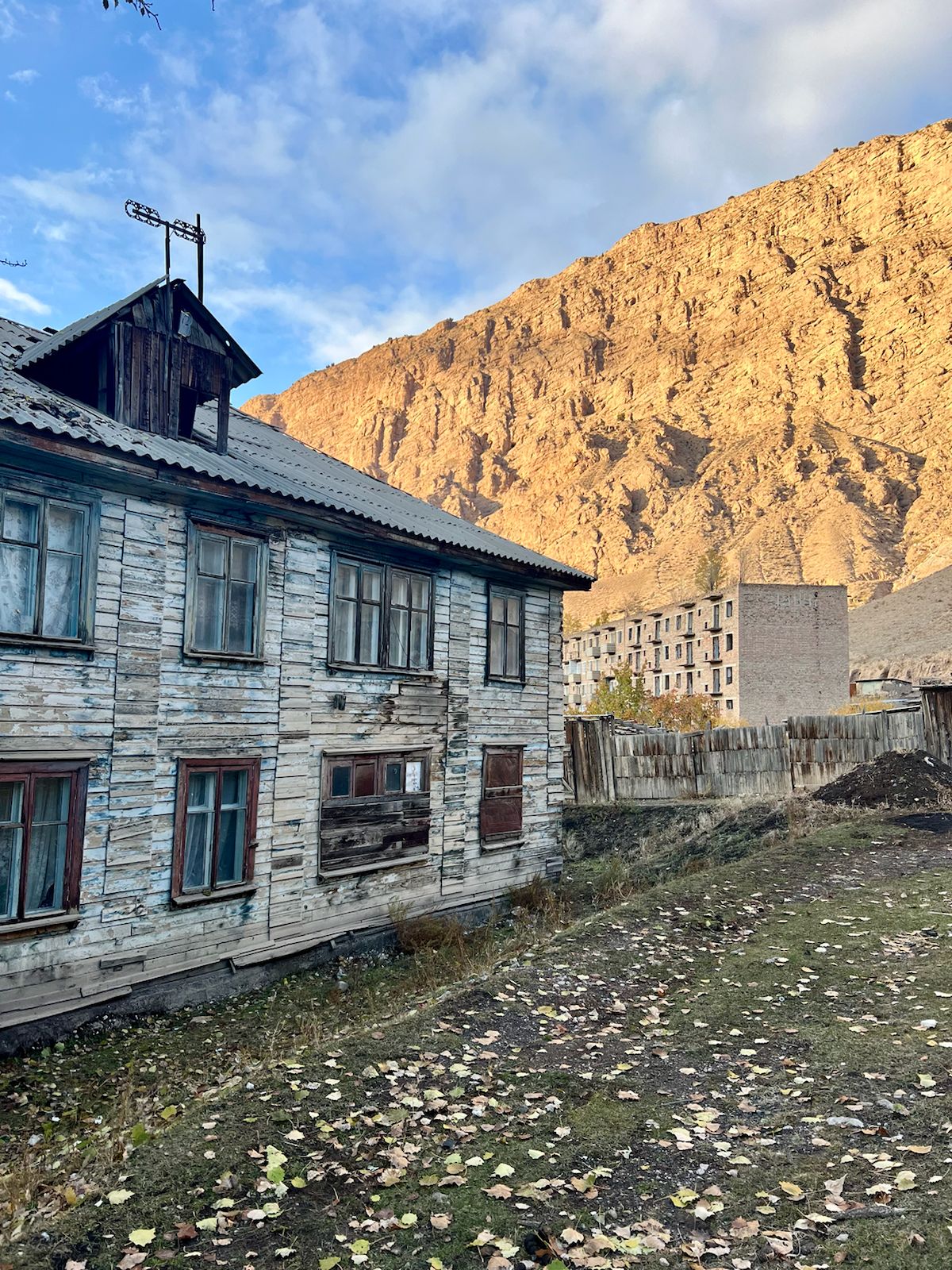
@TCA H.Kuvin
A friendly security guard poked his head out the window at 08:30 and asked me how I slept. I was going on a quick walk while the town was waking up. He saw I had my camera. “Take a picture of me!” he exclaimed and posed. As it turns out, this building is the city government office; there is a separate entrance for the two-room hotel. I returned from my walk, made a big batch of scrambled eggs for the group, and packed the car.
We chatted with the daytime security guard before leaving. He has lived here his entire life and previously worked in the pen factory. I tell him I like his jacket, “It’s from the Soviet Union,” he says, “when the quality was good.” He opens the gate for us, shakes my hand through the car window, and tells us to return soon.
We reach an old house of culture perched on a mountaintop and get out of the car for a picture and conversation with a few men sitting outside. We learn that the pen factory is, in fact, still standing. “It’s just up the road, a one-story building,” he shares. I grin ear to ear.
Sure enough, about three minutes up the road stands a one-story building with its windows busted. A small water flow rushing through the grass has made its path here. It must have come from the mountains above, and who knows how long it has been here.
We scan the factory’s perimeter and find an accessible entrance in a room. The enormous machines’ paint is fading, moss has covered parts of the floor, and still water is pooled in crevices.
We exit the first room and enter the main production hall: jackpot. The mural I’d seen online and thought was destroyed still stands in vibrant color. Across the hall is another banner, “Glory to work!”
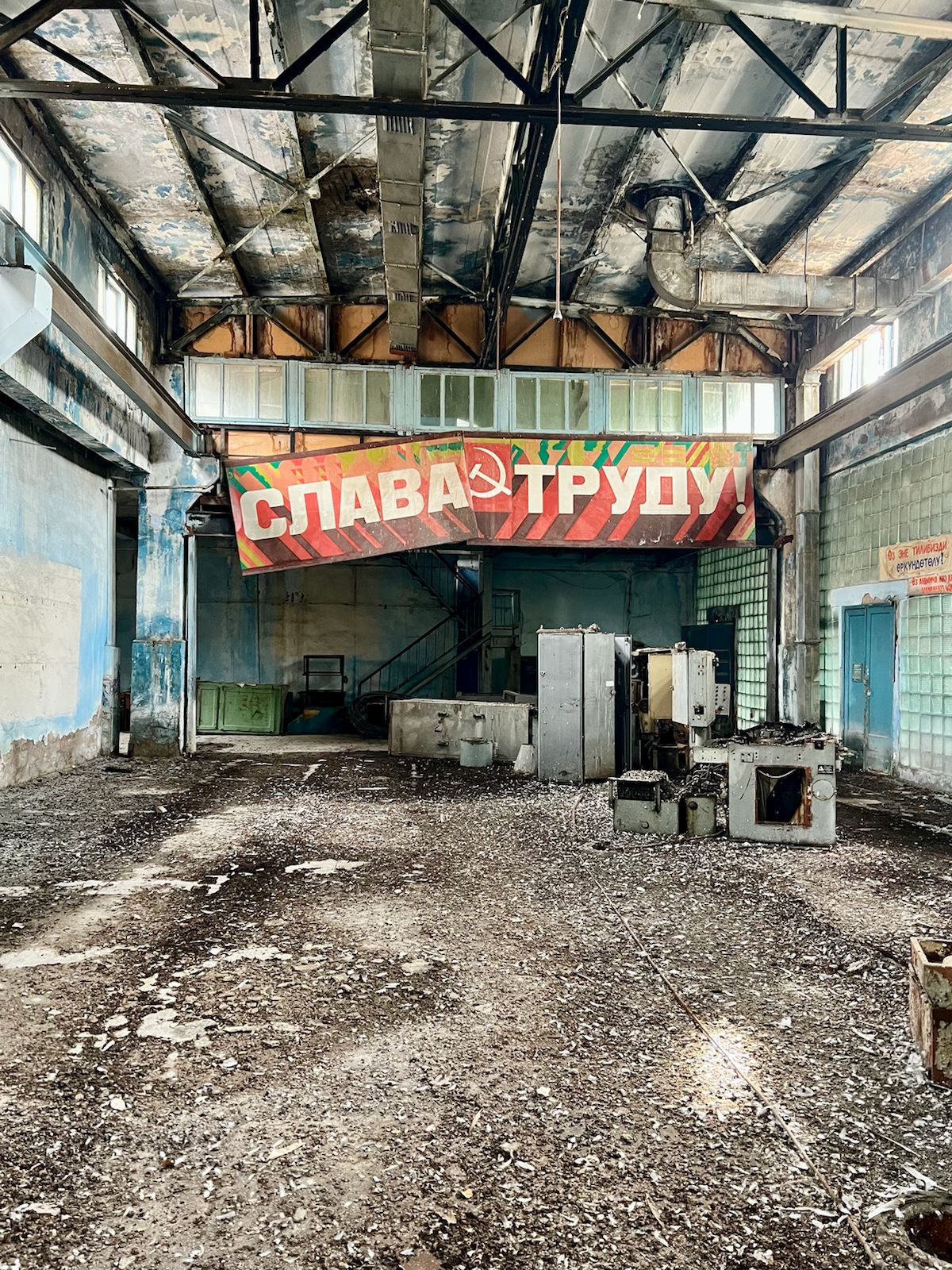
@TCA H.Kuvin
In Kyrgyz, Min-Kush means “a thousand birds.” It seems all one thousand of them have visited this factory because the floors were caked with their droppings. I couldn’t care less.
There are separate rooms along the main floor; we enter and search. Two calendars, one from 1988 and one from 1990, are still hanging on the wall. One reads, “The Soviet Insurance Company.” I walk further into the room, where a Geiger counter and gas masks are on the floor. There is a sun-baked instruction sheet on how to put one of the masks on. This was a uranium mining town, after all.
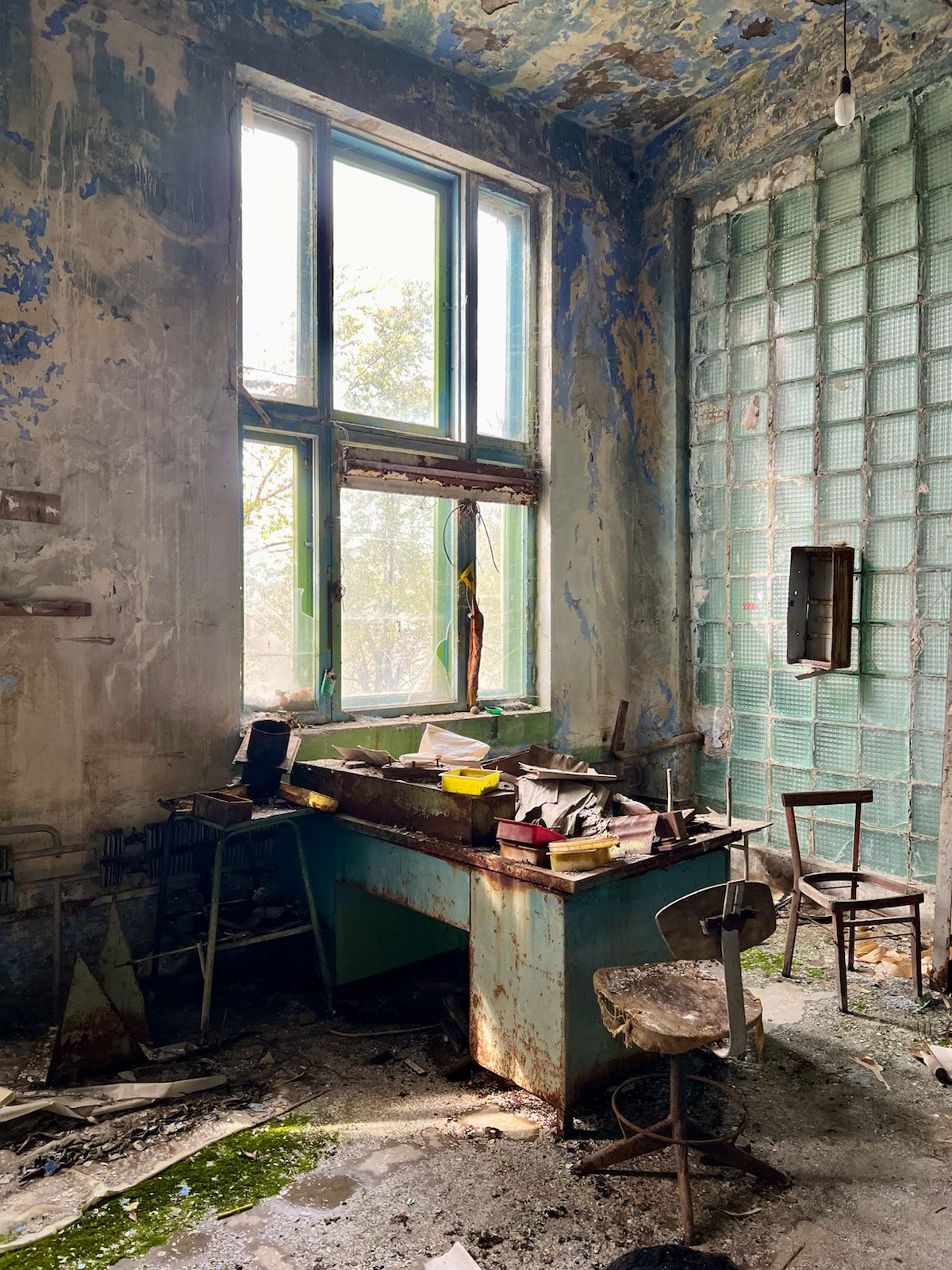
@TCA H.Kuvin
In another room, a pair of boots sits on a locker; inside are pictures of idols and naked women. The sun flows into the room through the broken glass and reflects off the moss on the chair. A red banner that reads, “Work is to live and to study communism.” I see another banner in the main hall with Lenin’s face, covered in bird feces and baked by thirty-plus years of sun exposure.
In another backroom, sewing machines sit on desks under a water-dripping ceiling. Matchboxes and tubes of ointment are still in the drawers. I do not try the mystery ointment.
We make our way out of Min-Kush, passing by the children playing in the streets and elders reading on tree stumps. I can’t help but think of what the man from the day before said, “We cannot dwell on things.”
We take the other, shorter route back to Bishkek. Although shorter, the roads are in worse condition and weave between mountain ranges. The views, however, are spectacular. Going to the bathroom on the side of the road has never looked so good.
Min-Kush, a town that went from riches to rags, is still dealing with the ghosts of its past. Uranium burial sites are being dug up and transported elsewhere to limit the impact on the region’s water sources. Qatar has funded two new mosques in the city, the school has been renovated, and people remain optimistic. “We have nothing else to do besides enjoy what we do have,” the man who asked for a cigarette told us.
The city sees tourists during the summer but virtually none from September to May. The friendliness we encountered, though, was second to none. Everyone was incredibly kind and welcoming. People over 40 remember what times were like in the USSR and want the same living standards for their children. “What do we do without a hospital here?” a firefighter told us.
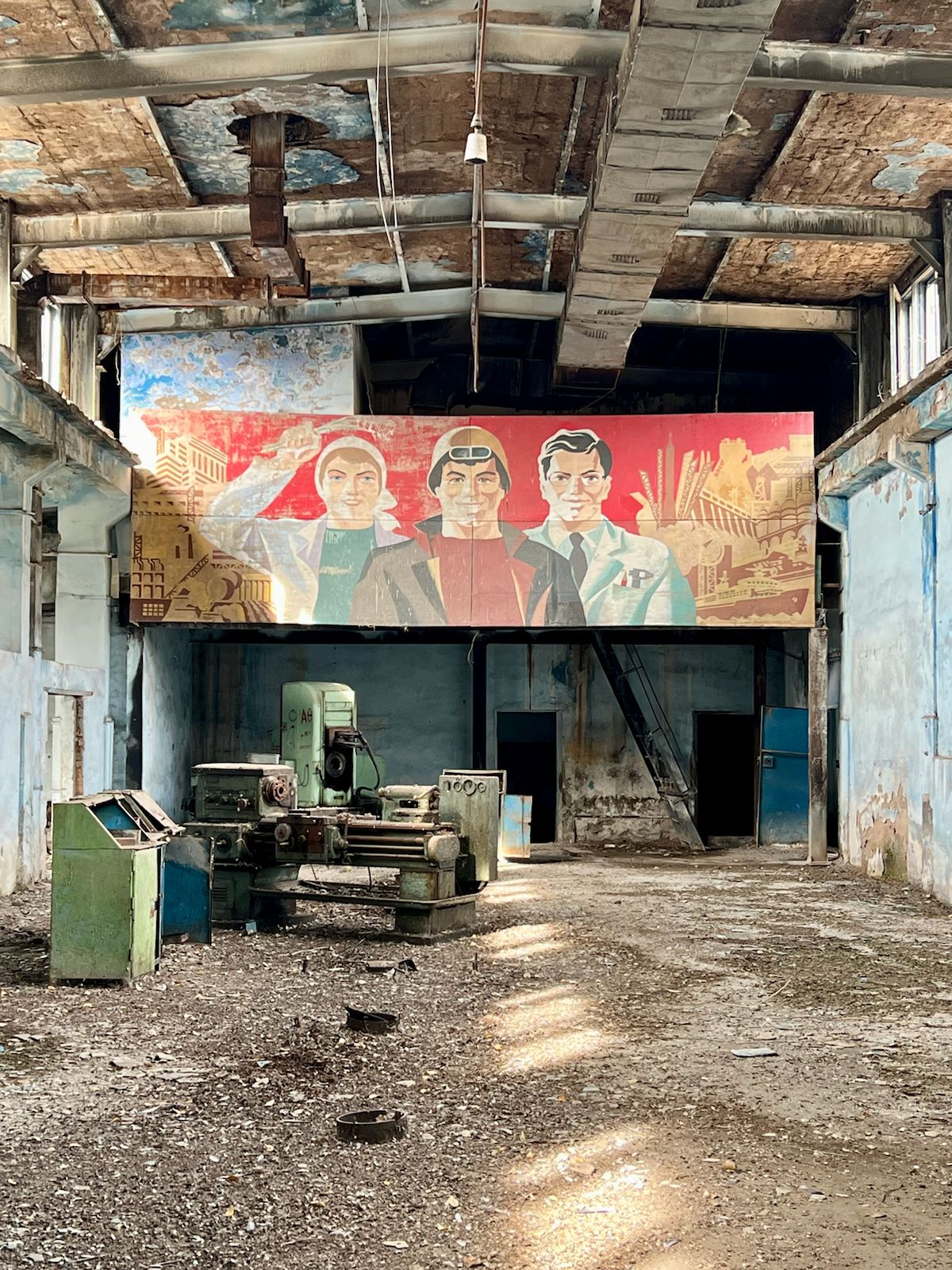
@TCA H.Kuvin
From prosperity to near abandonment, Min-Kush sits idle in the mountains at the end of the road, waiting for a brighter future. The city is a time capsule, tucked far away from everything else, whose residents reminisce about a more colorful life. From my conversations with its residents, it is clear that we all wish for the same things in life.
